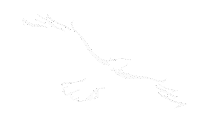CHAPTER XV.
OCCUPATION OF THE WISCONSIN AND CHIPPEWA RIVER VALLEYS BY THE OJIBWAYS.
The Ojibways of La Pointe send hunting parties into the
midland country lying between the Mississippi and Lake Superior--First
permanent residents at Lac Coutereille--Cause of the "three brothers"
braving the attacks of their enemies--Lac Coutereille becomes an important
Ojibway village--Families branch off who take possession of Lac Shatac, Red
Cedar, and Long Lakes, and Puk-wa-wanuh on Chippeway River--The Ojibway
pioneers to the headwaters of the Wisconsin--They form their village at Lac
du Flambeau--Branches of this band occupy the Wisconsin River and Pelican
Lakes--Present descendants of the Lac Coutereille pioneers--Origin of the
name Lac Coutereille.That portion Of the present
State of Wisconsin, comprising the valleys of the Chippeway and Wisconsin
rivers, and the country watered by their numerous tributaries, have been
occupied by a large section of the Ojibway tribe, for the past century. The
beautiful inland lakes, from which they head, have been for this length of
time the sites of their villages.
After the Ojibways had driven the Odugamees from this
section of country, also from the St. Croix rice lakes and the headwaters of
the On-ton-a-gun, incited by the fur trade which Bad actively commenced at
this period, large camps of Ojibway hunters began to explore and take
possession of the rich hunting grounds which were comprised in the midland
country lying between Lake Superior and the Mississippi. For a number of
years, however, these hunters made no permanent stay on any spot throughout
this country, because danger lurked behind every bush and every tree from
the prowling war parties of the Dakotas and Odugamees. Having made their
winter hunts, in the course of which they even reached as far as Lac du
Flambeau and Lac Coutereille, the hunting camps would invariably return each
spring to La Pointe (Shaug-a-waumik-ong), to join their people in the
periodical performance of the sacred rites of the Grand Medawe, and to make
their summer visits to the nearest French trading posts to barter away their
peltries.
Three generations ago, or about the year 1745, the first
Ojibway pioneer hunters, braving the attacks of their enemies, first
permanently planted their wigwams on the shores of Lake Coutereille, and
formed a focus around which families of their tribe have gathered and
generated till, at this day, those who claim this as their central village,
number full one thousand souls.
The founders of this village consisted of three brothers
belonging to the daring and fearless Bear Clan. On the shores of Lac
Coutereille (Ottaway Lake), during the course of a winter hunt, they lost
one of their children, and as they returned dust to dust, in the silent
grave, they buried the seed which caused them, as it were, to grow implanted
on the soil, like a tree, to shade it from the rude gaze of strangers, and
watch it against the ravenous visits of wild beasts.
There was a charm about that silent little grave, which
caused the mourning parents to brave all dangers, and isolated from their
fellows, they passed the spring and summer in its vicinity, and eventually
made the spot where it stood the site of a permanent village. Their numbers
increased every year, till at last, being followed by their traders, who
made Lac Coutereille their inland depot, parties of hunters branched off,
and pressing back the Dakotas, they took possession and finally formed new
villages at Lac Shatac, Red Cedar and Long Lakes, and at Puk-wa-wanuh on the
Chippeway River.
About the time the Odugamees were eventually driven from
the Wisconsin River and forced westward to the Mississippi, the Ojibways
took possession of the headwaters of this river. The pioneer chieftain of
this extensive district of country was named Sha-da-wish, a son of the great
chief of the Crane family, who received a gold medal during the French
convocation at Sault Ste. Marie in 1671. From this scion of the family, have
directly descended the noted Keesh-ke-mun, Waub-ish-gaug-aug-e (White Crow),
and the present ruling chief of this Section of the tribe, Ah-mous (Little
Bee). From a second son of the same ancient chieftain, named A-ke-gui-ow,
are descended the branch of the Crane family residing at La Pointe, of whom
the late deceased Tug-waug-aun-e was head and chief during his lifetime.
The French early designated that portion of the tribe who
occupied the head-waters of the Wisconsin, as the Lac du Flambeau band, from
the circumstance of their locating their central village or summer
residence, at the lake known by this name. The Ojibways term it
Wauswag-im-ing (Lake of Torches), from the custom of spearing fish by
torch-light, early practiced by the hunters of their tribe who first took
possession of it.
Before eventually permanently locating their village at
this lake, the Ojibways, under their leader, Sha-da-wish, made protracted
stands at Trout Lake and Turtle Portage, and it was not till the times of
his successor and son, Keesh-ke-mun, that this band proceeded as far west as
Lac du Flambeau, for a Permanent residence. From this important point there
has branched off families who now occupy the country on the Wisconsin River
as far down as the Yellow banks, near the mouth of Fox River, and families
who occupy the Pelican Lakes in the direction of Lake Michigan.
Within the past century there has spread over this region
of country, including the Chippeway River and St. Croix district, from
natural increase and accessions from Lake Superior, bands who now number
about three thousand souls.
They have encountered inveterate enemies at every step of
their advance, and the spots are countless, where they have battled in
mortal strife with Dakotas, Odugamees, and Winnebagos. The dangers and
vicissitudes of the first pioneers into this section of country were equal
to, and of the same character, as beset the onward course of the hardy
hunters of the Upper Mississippi.
From the time that the Lac Coutereille and Lac du-Flambeau
villages became of sufficient importance, as to assume the privilege of
performing the rites of the Meda-we-win within their own precincts, they
were considered actually separated from the common central body and Meda-we
lodge, which had for so really years flourished and concentrated at La
Pointe, of Lake Superior, and they became from that time distinct "branches
of the same parent tree."
Ka-ka-ke (Hawk), the present war-chief of the Chippeway
River district, is the direct descendant in the third generation of the
hunter who lost his child on Lac Coutereille, and became the founder of the
Ojibway village located on this lake.
Lac Coutereille is named by the Ojibways "Odah-wahsah-ga-e-gun
(Ottaway Lake), from the circumstance that some time over four generations
ago, a party of Ojibway hunters discovered on its shores the frozen body of
an Ottah-wah, which tribe at this time extended their hunting parties even
to this remote point
go to
chapter 16
1
- 2
- 3
- 4
- 5
- 6
- 7
- 8
- 9
- 10
11
- 12
- 13
- 14
- 15
- 16
- 17
- 18
- 19
- 20
21
- 22
- 23
- 24
- 25 - 26 - 27 - 28 - 29 - 30
White Eagle Soaring: Dream Dancer of the 7th Fire







 Get
a course to promote your business online, explode your sales
Get
a course to promote your business online, explode your sales Get
software to promote your business online in less time
Get
software to promote your business online in less time Get
software to streamline your business and run it hands free.
Get
software to streamline your business and run it hands free.